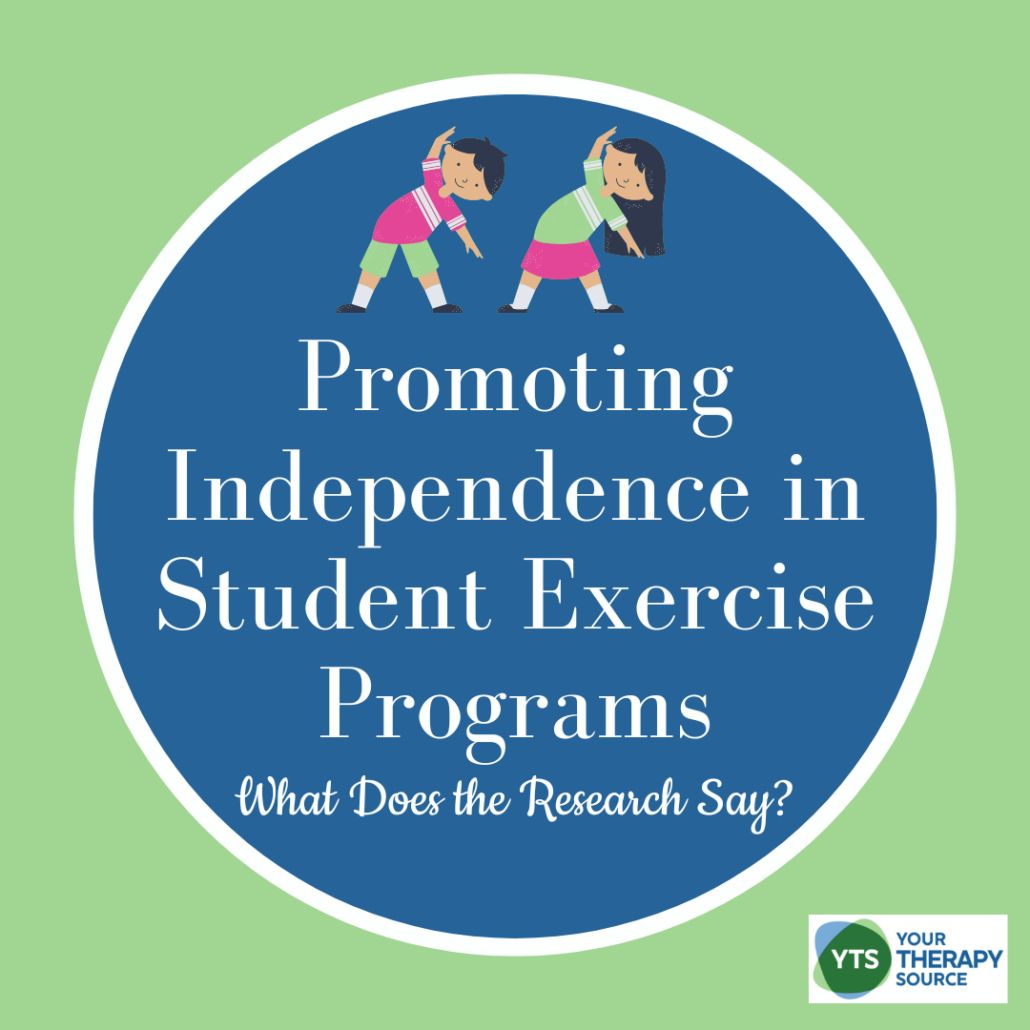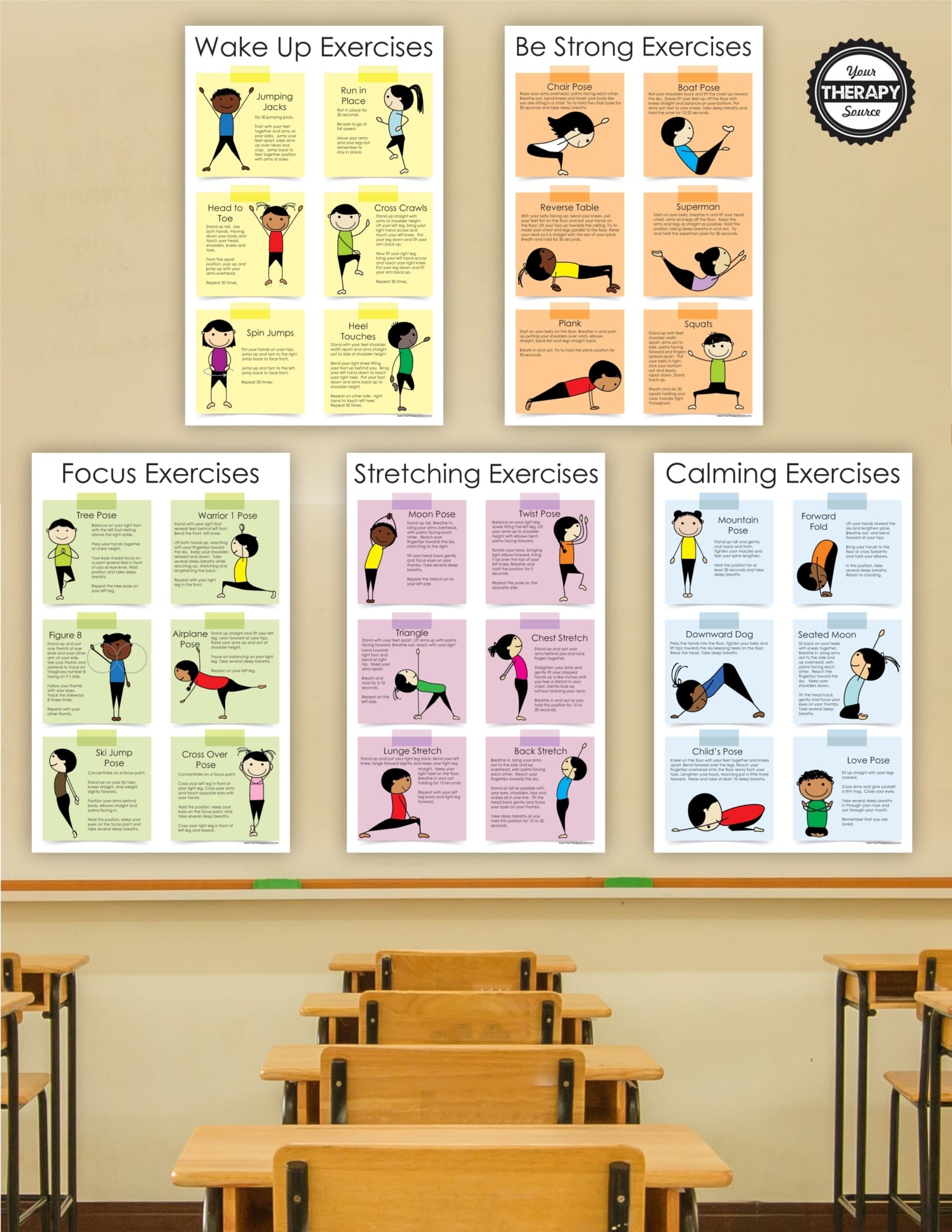Promote Independence in Student Exercise Programs
Helping students become independent with their exercise programs is a key goal for physical and occupational therapists in schools and clinics. A recent small study focusing on children with intellectual disabilities explored strategies to enhance student engagement, consistency, and self-regulation in completing exercise routines. Learn more about the study’s findings to promote independence in student exercise programs for individuals with intellectual disability.

Research Findings: How to Improve Student Independence in Exercise Programs
The study examined various approaches to increasing student adherence to exercise programs, including structured routines, self-monitoring strategies, and peer support. Key findings include:
- Self-Monitoring Tools Improve Consistency – Students who used visual schedules, exercise logs, or digital tracking tools were more likely to complete their exercises independently.
- Peer Involvement Enhances Motivation – Students who participated in peer-mediated interventions, such as buddy systems or group exercises, demonstrated greater engagement and accountability.
- Structured Routines Support Executive Functioning – Predictable, structured exercise sessions helped students with attention and executive functioning challenges stay on task.
- Movement Breaks Throughout the Day Increase Carryover – Embedding short, purposeful movement activities in daily routines improved follow-through with prescribed exercises.
Although the study was small and focused specifically on children with intellectual disabilities, the findings align with broader research on exercise adherence and motivation, suggesting that these strategies could benefit a wider range of students in school-based and clinical therapy settings.

Exercise Posters for Kids – Printed
Clinical Implications to Promote Independence in Student Exercise Programs
These findings provide valuable insights for therapists designing exercise programs for students with intellectual disabilities and beyond. Here’s how school-based and clinic therapists can implement these strategies:
1. Use Visual Schedules and Checklists
Providing students with a visual representation of their exercise sequence can increase independence. This can be in the form of:
- Picture-based schedules for younger students or those with cognitive challenges
- Written checklists for older students
- Digital tracking apps to gamify progress
2. Incorporate Peer-Mediated Strategies
Encouraging peer support can improve adherence and engagement. Therapists can:
- Pair students with a “workout buddy” during therapy or PE class
- Implement small group exercises where students motivate each other
- Train peer mentors to model proper form and encourage participation

3. Structure Exercise Routines to Enhance Executive Functioning
Students with executive functioning challenges benefit from structured routines. Strategies include:
- Setting up a consistent exercise sequence (e.g., warm-up, core exercises, cool-down)
- Using timers or visual cues to help students transition between activities
- Breaking down complex exercises into smaller, achievable steps
4. Embed Movement Throughout the School Day
Instead of limiting exercises to therapy sessions, consider integrating them into classroom routines:
- Quick movement breaks before or after academic tasks
- Teacher-led exercises during morning meetings or transitions
- Active learning strategies, such as stretching while answering questions
5. Encourage Self-Monitoring and Goal Setting
Teaching students to take ownership of their progress fosters independence. Try:
- Having students track their own performance using a simple rating scale
- Setting small, measurable goals (e.g., “I will complete my exercises three times this week”)
- Using rewards or positive reinforcement when students meet their goals
While this was a small study focused on children with intellectual disabilities, the findings highlight effective strategies that can be applied more broadly. Helping students become independent with their exercise programs is essential for long-term success. By incorporating self-monitoring tools, peer involvement, structured routines, and embedded movement opportunities, therapists can foster greater engagement and adherence. These strategies not only improve physical outcomes but also support executive functioning and self-regulation skills, empowering students to take an active role in their own movement and well-being.
Goal Sheets for Students
RELATED POSTS
For additional insights on exercise and student engagement, check out these related posts:
Balance and Coordination in Boys with Intellectual Disabilities
Exercise and ADHD Symptoms: The Link to Executive Functions
Exercise to Reduce Challenging Behaviors
Core Strengthening Exercises for Kids
Peer-Mediated Interventions: How They Help
REFERENCE
Pan, C. Y., Tsai, C. L., Chen, F. C., Chen, C. C., Hu, Y. H., & Chu, C. H. (2025). Effectiveness of a Fundamental Movement Skill Intervention in Children With Autism Spectrum Disorder: A Randomized Controlled Trial. Focus on Autism and Other Developmental Disabilities, 10883576241311171.


